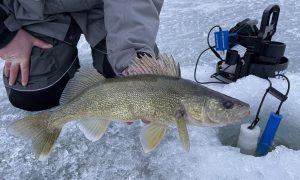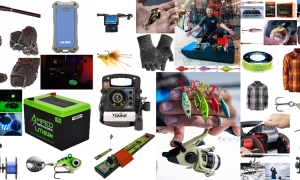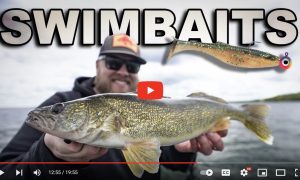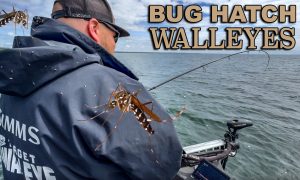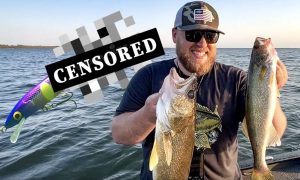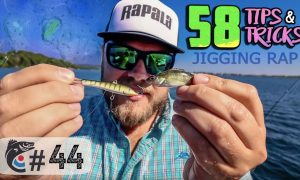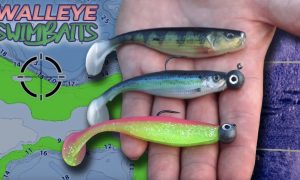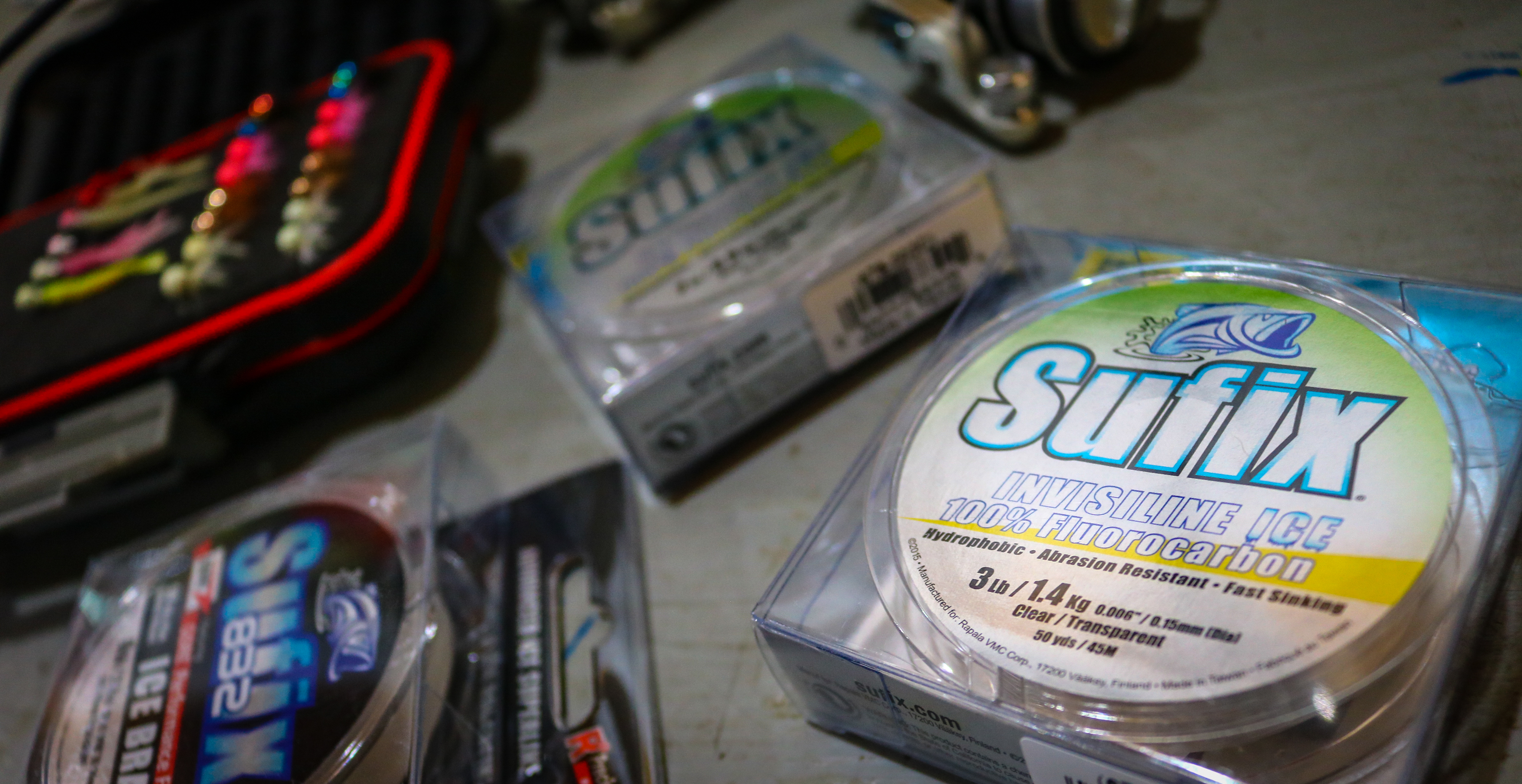
by Brett McComas:
Note: There’s no one specific line type that’s ideal for all situations, but fluorocarbon tries to come close. Here’s how it stacks up against the other lines and why you need to have a rod or two rigged up with it:
How it compares to mono
Fluoro is going to be more ‘invisible’ than mono, making it the ultimate line in ultra-clear water or on heavily-pressured fish in community holes. You’ll really notice the difference when sight-fishing for finicky panfish in shallow water. Fewer fish hesitate to bite — try it side by side with a buddy who’s not using fluoro.
It also has less stretch than mono, which is going to make it much more sensitive and help to feel those light bites. Less stretch means more solid hooksets, to really drive those hooks home into the tough upper snout of a walleye.
How it compares to braid
There’s no better option for outside hole-hopping than fluoro. Braided lines will hold moisture, which can freeze up in really cold temps — especially when fishing outside the shack. Won’t have that problem with fluoro.
Fluoro does offer a little more stretch than braided line, but that will help keep fish pinned. That slight stretch acts as a shock absorber to the fish’s thrashing head. At the end of the day you’ll have less torn-out hooks and put more fish topside.
The downfall
The downfall to fluoro is that it’s going to need to be replaced more often than braid or mono. Braided line may last you an entire season or two, whereas fluoro is going to have more memory and will get ‘the coils’ quicker on the tiny spools of micro ice reels.
Make it more affordable by filling the spool with cheap ‘backing’ or old line, then put on just enough fluoro (say 50′ or 60′) to be able to fish for the day. When the line begins to coil, pull it off and throw on fresh stuff. That way a small spool can last you up to a half dozen trips instead of just one.
Things to consider
One thing to consider is how running fluoro can affect the action of your bait. Sufix InvisiLine Ice Fluorocarbon sinks 4 times more quickly than mono. Its sink-rate helps “tighten up” the line when using lighter, non-tungsten panfish jigs.
A quicker drop could also be considered an advantage: This allow you to get your bait back down quickly when on a hot school — or to intercept that mark that showed up out of nowhere on your flasher — especially in deeper water.
Downfall? Some spoons might not get the same fluttery look on the drop — though you may hardly notice the difference with the lower lb-test and lightweight spoons that are most common for ice fishing….
Spooling up

The VMC Tungsten Fly Jig comes in 1/64- to 1/16-oz sizes.
If you’re looking for a good all-around line for panfish, check out the 3-lb Sufix InvisiLine Ice Fluorocarbon. Works great for tiny jigs like the VMC Tungsten Fly Jig right on up to the smaller jigging spoons you’d use fishing a deep-water basin.
The 7-lb Sufix InvisiLine Ice Fluorocarbon is a killer size for chasing walleyes in clear water. It works especially well in skinny water, but I’ll frequently use it out to 25′ or 30′. You’ll be surprised just how tough and abrasion-resistant this fluoro is — even against toothy critters.

